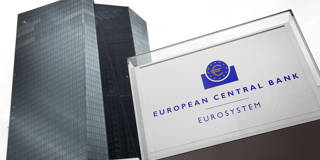The European Central Bank is now signaling its intention to end quantitative easing this year, indicating that it expects eurozone inflation to reach its target of "below, but close to, 2%." But as the ECB prepares for the next crisis, it would be well advised to revisit its longstanding price-stability objective.
ZURICH – The European Central Bank’s recent announcement that it will try to end asset purchases by this December means that it has confidence in its ability to achieve price stability. But those who decided that price stability should be the ECB’s single, overriding policy goal may have shot themselves in the foot, not least by denying policymakers much-needed flexibility.
The ECB defines price stability as inflation “below, but close to, 2% over the medium term.” That is a lower inflation rate than even the Bundesbank achieved during its celebrated pre-euro history, and it is a tighter target than virtually all other central banks pursue. For some, too much of a good thing is apparently wonderful.
To be sure, the ECB’s definition of price stability was not a problem during the period between the global financial crisis and the adoption of quantitative easing, when inflation was well below 2%. To those who believed that monetary policy had been too tight, the ECB was right to do whatever it could to push inflation up toward the target range.

ZURICH – The European Central Bank’s recent announcement that it will try to end asset purchases by this December means that it has confidence in its ability to achieve price stability. But those who decided that price stability should be the ECB’s single, overriding policy goal may have shot themselves in the foot, not least by denying policymakers much-needed flexibility.
The ECB defines price stability as inflation “below, but close to, 2% over the medium term.” That is a lower inflation rate than even the Bundesbank achieved during its celebrated pre-euro history, and it is a tighter target than virtually all other central banks pursue. For some, too much of a good thing is apparently wonderful.
To be sure, the ECB’s definition of price stability was not a problem during the period between the global financial crisis and the adoption of quantitative easing, when inflation was well below 2%. To those who believed that monetary policy had been too tight, the ECB was right to do whatever it could to push inflation up toward the target range.